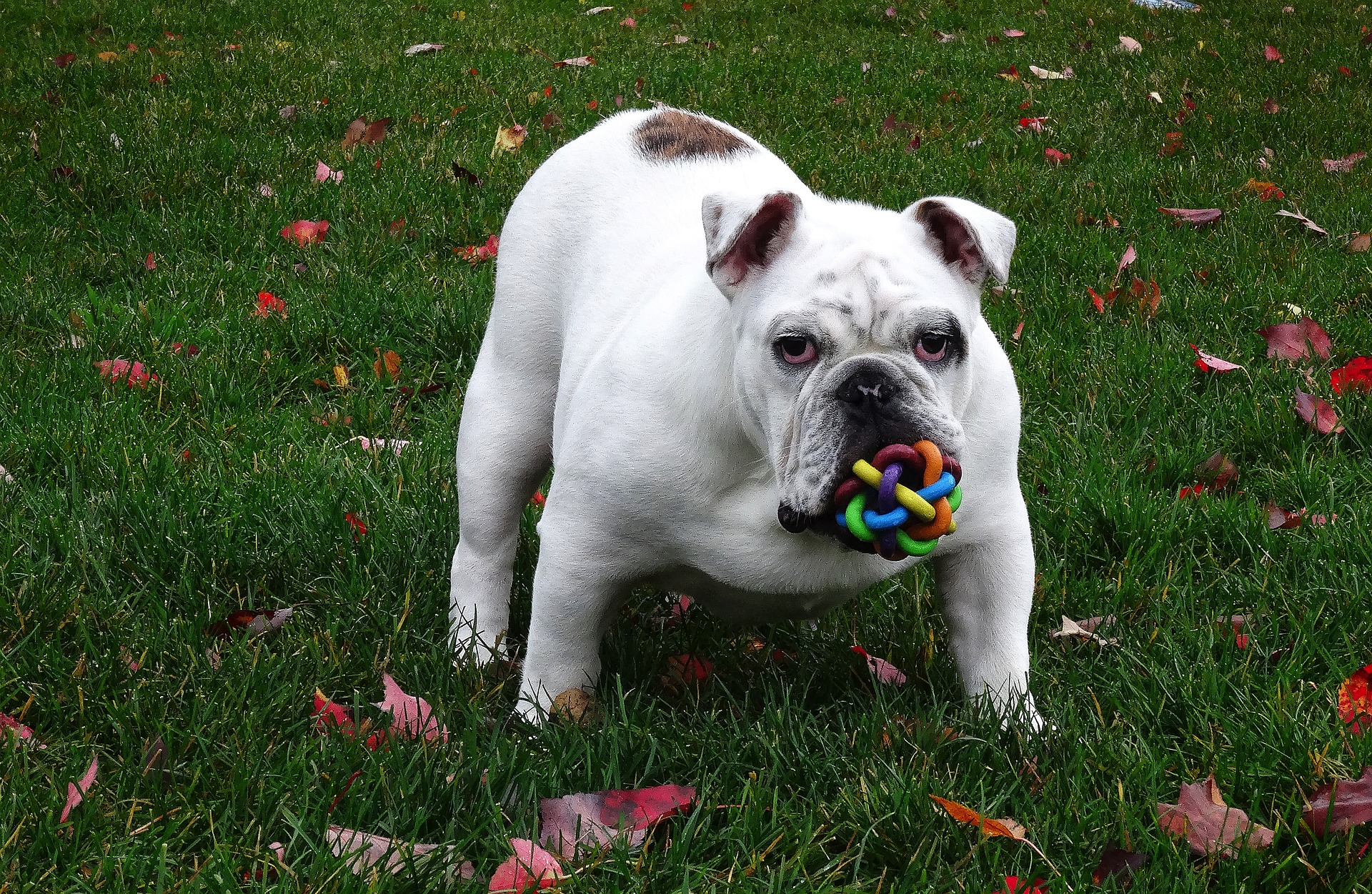This is the latest post in a series looking back at the basics of obedience training. Although we have spoken about these topics before, it is always a good idea to review the basics! So let’s get started and review how to keep your dog from resource guarding.
We’ve all seen it before–a dog may be eating or engrossed in a toy when someone approaches, and the dog suddenly becomes defensive. This isn’t a universal trait among all dogs, but it is quite common. Resource guarding, a dog’s overprotectiveness of high-value items, can be mild in some cases, but can lead to injury in others if they lash out. Train your dog to remain relaxed even when someone is near their beloved things.

What is resource guarding? It’s an instinctual behavior, and an important one at that–before being domesticated, wolves had to protect their food from others trying to steal it. They were always on guard and ready to defend their meal, since they weren’t sure when they’d eat again. This instinct now manifests as dogs protecting food, toys, objects, or even their favorite person. As we said, resource guarding is a very common behavior, but it has the potential to be dangerous in our pets. Luckily, it’s also a behavior that is quite easily changed.
Why does resource guarding develop? Some dogs instinctively guard from an early age, while others start later. It can present in varying degrees of severity. Sometimes a dog will simply eat faster when approached in order to keep all their food to themselves, or pick up its toy and bring it somewhere else out of reach. They may glare at you or give you the whale eye (when they follow you out of the corner of their vision, and you can see the whites of their eyes). In more intense cases, a dog will noticeably stiffen when approached, bare its teeth, and/or growl when you get near their meal or toy. They may even bite when you try to remove the high value item. It’s especially important to discourage this intensity if you have children around.
The ultimate goal is to create positive associations between the things that cause them to guard–be it the approach of someone while they’re occupied, or the removal of their food bowl or toy.
If your dog resource guards their meals: Give your dog their food, then sit within your dog’s line of sight while they eat, just far enough away for them to be comfortable. Toss treats their way while they eat. This will teach your dog that it’s a GOOD thing when their human is near them while they eat–they get even more yummy treats! Gradually get closer to them over the course of a couple weeks, until you can sit right in front of them and place treats next to their bowl. From here, you can work up to petting them while they eat as well.
If your dog guards their toys: One of the reasons a dog may begin to guard is because they feel they need to take action against you in order to keep the high-value items they love. If you swoop in, remove a toy, and leave them with nothing, they’ll be more likely to fight to keep it. For this reason, it’s always better to trade for items instead of simply taking it away. If their favorite squeaky toy is driving you mad, don’t just remove it–offer them another favorite toy or a great treat like a piece of turkey in exchange. You’ll notice they then willingly give up the squeaky toy.
Whether teaching your dog to share his toys, or helping him to walk on a loose leash, Gulf Coast K9 Dog Training is one of Sarasota and Manatee country’s most trusted dog obedience training facilities. Call today for class schedules and information.




